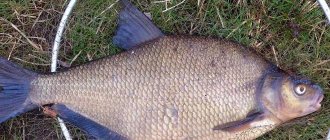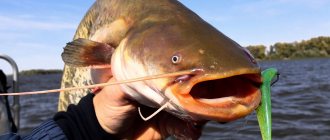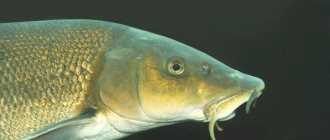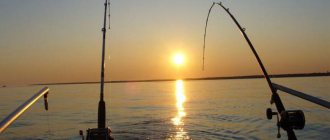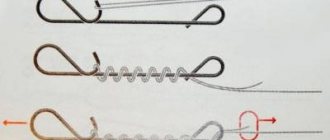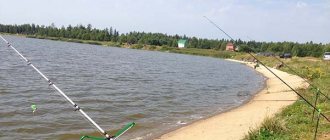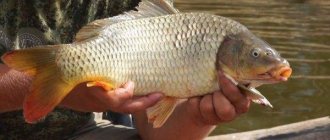Content
- About the products of LLC NPP MIKROS Spray GAMARUS
- Spray GAMARUS +
- Spray PIKE
- Gel PIKE
- Spray MORMYSHKA
- Spray LOTA
- Dry attractant ALBUMIN
To be honest, until this year I was very skeptical about attractants, I thought it was just another scam like the well-known Herbalife and its other followers, but my inquisitive mind still haunted me and from time to time I returned to the idea of still experiencing a miracle. stinky.
One evening I sat down seriously and began to think about whether it was worth trying or not, and I asked myself a series of questions, which I answered myself and made, as it seems to me, the right choice, so the list of questions:
WHY CAN AN ATTRACTANT BE INTERESTING TO FISH?
The attractant may be interesting for the fish because it will taste the food, and if this turns out to be the case, then in any case the time the fish holds the bait should be increased several times, and ideally the fish should try to eat the bait soaked in the attractant.
HOW IMPORTANT IS IT FOR FISH TO FEEL THE TASTE OF NATURAL FOOD?
The first thing I realized was that there are times in winter fishing when a person who is a master at using a reelless hook is forced to hook a bloodworm or other bait to get a fish to bite. Secondly, I personally tested it more than once, with very low activity of the pike, a pike gut put on the hook of a jig head worked several times more efficiently than the coolest silicone bait, despite the fact that the gut does not have its own game, but simply dangles without exerting any influence. great influence on the lateral line of the predator. And thirdly, I watched programs with the participation of American athletes who claimed that if pike perch does not eat silicone, then it will eat live bait anyway, and they confirmed this in practice. In fact, there are a lot of such examples, and I think everyone will remember at least one.
So, in theory, it turned out that if the fish feels a similar or very similar taste in its mouth, then this should have a positive effect on the fish’s bite and the time the bait is held in the mouth.
In theory, I convinced myself, all that remains is to test the hypothesis in practice. Arriving at the store, I saw that the actively advertised attractant costs around 500 rubles. for a tube, no, it’s too expensive for an experiment, and then the seller offered me the attractant “Gammarus” and “Pike” from our Novosibirsk, costing 140 rubles, this price attracted me, and I took a tube of gel and bottles of spray and after a couple of days, Once on the pond, I tested it on wobblers, sprayed the bait with a spray, let it dry for a couple of minutes and off I went. The fetid aroma lingered on the bait for about 15-20 retrieves, and on that fishing trip I caught my friend with a crushing score of 11:2, and caught a roach weighing 30-40 grams using a wobbler 5 cm long. The thought crept in, is the attractant really that effective, but I quickly cooled myself with the thought that fishing alone is not an indicator and we need to conduct the experiment again, then several fishing trips for perch with a microjig always gave enviably stable results, and my skepticism slowly melted away, but still something... It wasn’t enough to finally tell myself that the attractant has the right to life, but to reach the final point in this matter, I had to wait until the weekend and go catch pike perch in the snags.
So, in the morning I go to a long-familiar hole, there are definitely pike perch, in my box of baits there are 10 non-hooking foam rubber, five of which are not treated with anything, two are treated with a spray, three were soaked in the gel in the evening and were properly saturated with it. I start with a non-scented foam rubber and in an hour I got six bites, the tail of two foam rubbers was bitten off, and one zander weighing 400 grams was caught. My partner has two gatherings and that’s it, I decide not to use the spray, since I will catch it in the current and the aroma will not stay in place, but will be washed out and carried away by the current, but foam rubber soaked in gel is the best, since the gel is greasy, it will repel water and the smell will last much longer. So cast, bite, hook, sit, get a pike perch weighing about 2 kg, great, after a few casts another pike perch, then another, in the end my partner, who went through the entire arsenal of baits, was left without a catch, my catch was 10 pike perches with a total weight of 10, 6 kg and two burbots of 1 kg each. After that, I finally decided for myself that it’s worth taking an attractant with you for inactive fish. What’s interesting is that all the fish took it by mouth, which means they didn’t try to spit out the bait, that is, they didn’t feel the catch, and this is a very good indicator.
As a result, I decided for myself that the product at least deserves our attention and really works, which means it should be in our box.
Grigory Bezmenov
About the products of NPP MIKROS LLC
Attractants of the PIKE and GAMARUS series are scientific developments of scientists from NPP MIKROS LLC and the Institute of Cytology and Genetics SB RAS in Novosibirsk. The products have patent protection and a safety certificate as feed additives. They are based on extracts of animal origin, which have high biological activity and cause a powerful food reflex in predatory fish (pike, pike perch, etc.). Research by scientists has shown that the attractant properties of the PIKE and GAMARUS series products are associated with the steroid hormones, multivitamins (A E B F), omega-3.6 polyunsaturated fatty acids, amino acids and microelements present in them. The main attracting substance is ARACHIDONIC acid with a characteristic fishy odor, characteristic not only of fish, but also of many aquatic crustaceans - daphnia, gamarus, shrimp, etc.
Spray GAMARUSThe spray is designed for catching predatory freshwater fish, mainly perch and pike perch. Its main component is an extract from the crustacean hamarus (mormysh, amphipod) with a large amount of carotenoids. This crustacean predominates in the diet of most freshwater fish. Both pike perch and perch enjoy eating it. When it is sprayed and applied to baits, the solvent quickly evaporates within 5-10 seconds, and the active ingredients either cover them with a thin layer (spinners, wobblers) or are deeply absorbed into them (foam rubber, foam plastic). In this state, the attractant is not washed off with water for a long time, leaving a vast field of smell in it, and baits are cast many times. The likelihood of catching predators increases significantly if you spray not only the bait, but also the fishing line: in this case, the volume of the smell field increases many times, especially in low currents. A predator that finds itself in this area will look for the source of the smell and react aggressively to the movement of the bait. | Spray GAMARUS +The spray is similar in composition to GAMARUS spray. It has a significantly higher concentration of active ingredients. This is necessary when fishing in fast currents. It is applied by spraying to spoons and artificial flies when fishing for grayling. Works effectively when fly fishing. Causes a strong food reflex, which manifests itself in confident and strong bites. |
Spray PIKESpecial development of scientists. Designed to catch all freshwater predators at any time of the year. Most effective when fishing for pike. It contains amino acids, proteins, and fats isolated from fish, which provide the bait with a natural, attractive food smell. Repeatedly stimulates the food reflex due to its effect on the olfactory and chemoreceptors of predators. Spray applied to various baits. The greatest efficiency is observed when bottom fishing heavy jig heads with foam rubber impregnated with PIKE spray. | Gel PIKESimilar to PIKE spray. The active ingredients are contained in a dense gel medium. The food odor field appears faster because... the gel actively dissolves in the environment. Works well in reservoirs with standing or slow-flowing water. Designed for catching predators. Apply a thin layer to the bait by squeezing it out of the tube. |
Spray MORMYSHKAFor catching pike perch, perch, roach, bream and other fish. The main component is the natural attractant NEKA, obtained from cysts of the branchial crustacean Artimium salina, which lives in salt water bodies. Has high biological activity. The greatest efficiency is in winter. | Spray LOTAFor catching burbot. Works effectively all year round. Apply to heavy bottom baits with foam tips. When retrieving, a long-smelling trail remains at the bottom, attracting a predator. It works flawlessly and efficiently. |
Part 2. Are attractants effective for pike?
Attractive for pike: are they effective?
Pike, Esox lucius, and other representatives of the genus Esox, are typical “visualizers” for whom vision is the main sense organ and do not respond to gustatory aromas (Devitsyna & Malyukina, 1977).
Pike reduce the frequency of attacks on typical types of prey and show examples of behavior unusual for predators when exposed to the “chemical” secretions of the perch, Perca fluviatilis: pre-blinded pikes found potential prey without having a primary sense organ, that is, using a “chemical” pheromone trail (Lehtiniemi, 2005; Lehtiniemi et al., 2005). “Chemical” secretions of perch, that is, secretions of pheromones (water from under adult individuals, 15 cm long, fed on fry before experiments) affect the pike alone, but the visual effect combined with the pheromone effect is many times more effective.
Among pheromones, pike atypically react actively to the conspecific sexual pheromone (Devitsyna & Malyukina, 1977) of pikes, which is distinguished by male individuals. The reaction to this pheromone is the same at any time, not only during the spawning period.
In addition, pike have been found to be attracted to the alarm pheromone of minnows, Pimephales promelas (Mathis et al., 1995; Chivers et al., 1996; indirect evidence from Wisenden & Thiel, 2001), which is secreted by minnows (and all minnows are minnow) in case of danger.
In addition, pike exhibit an excellent hunger response, inducing extreme hunger in pike and dramatically increasing foraging activity when exposed to the substance hypoxanthin-3(N)-oxide (Mathis et al., 1995), identified as the active component of the alarm pheromones of cyprinids and other ray-finned fish. fish
In the USA, the results of such studies were published as some of the secrets/know-how of the P-K company (an abbreviated name so as not to advertise) in the production of stimulant-attractants. Unlike many other manufacturers, PC developers are ichthyologists (scientists who study fish) and all developments are based only on many years of statistically proven scientific research. This data was provided by the manufacturer during legal proceedings when complaints were filed against them in court claiming that pike attractants could not work. The company was forced to reveal the veil of secrecy regarding the development of stimulants and, after winning in the courts, it was allowed not to disclose the composition of the active substances in the stimulants. You can see something similar with the Coca-Cola company, which keeps the recipe for the drink strictly secret and for which competitors offer fabulous sums of money.
For each stimulant, the formula was developed over a long period of time through practical experiments, during which incidents occurred. For example, the well-known universal attractant-stimulant xxxx was originally conceived with a different name and was developed as a general purpose salmonid, but during experiments it was revealed that its effect on fish such as pike, pike perch, perch, catfish and even CARP is much stronger than on salmonids for which it was intended.
At the same time, the manufacturer paid special attention to the fact that broad-spectrum generalists are less effective than narrowly targeted stimulants. And the second important point is that it is useless to stimulate fish to bite if they are not there where you intend to fish! You should also take into account that sometimes the baits you use scare away the fish, just like what happens if you smoke modern cigarettes or drink alcohol and then touch the bait with your hands that have traces of these substances on them. In this case, the stimulant affects the fish, but at the last moment it simply refuses to take your bait, which gives off a frightening aggressive smell or taste.
Basic References
Chivers DP, Brown GE, Smith RJF 1996. The evolution of chemical alarm signals: attracting predators benefits alarm signal senders. The American Naturalist 148, 649-659
Devitsyna GV, Malyukina GA 1977. On the functional organization of the olfactory organ in macro- and microsmatic fishes. Journal of Ichthyology 17, 493-502
Lehtiniemi M. 2005. Swim or hide: predator cues cause species-specific reactions in young fish larvae. Journal of Fish Biology 66, 1285–1299
Lehtiniemi M., Engström-öst J., Viitasalo M. 2005. Turbidity decreases anti-predator behavior in pike larvae (Esox lucius). Environmental Biology of Fishes 37, 1-8
Mathis A., Chivers DP, Smith RJF 1995. Chemical alarm signals: predator deterrents or predator attractants? The American Naturalist 145, 994-1005
Wisenden BD, Thiel TA 2001. Field verification of predator attraction to minnow alarm substance. Journal of Chemical Ecology 28, 417-422

